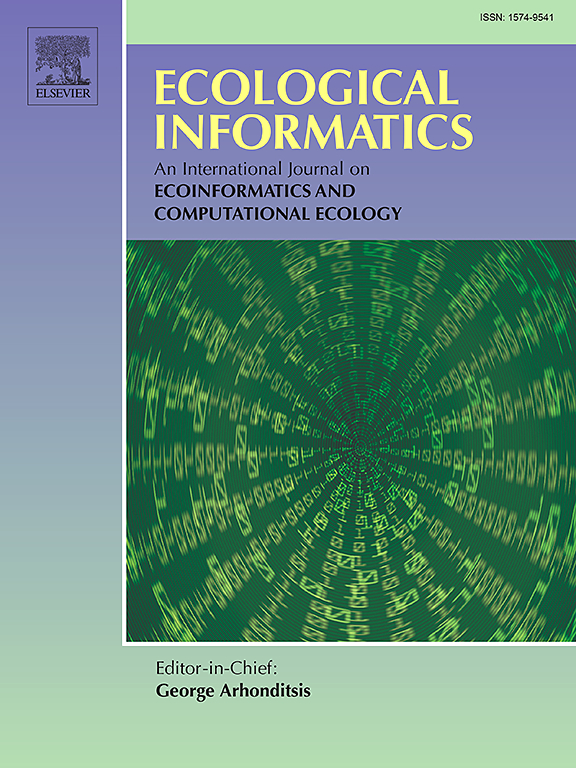Dynamic simulation and key influencing factors of carbon storage in the water-depleted zones of an arid Inland River Basin: Insights from the Tarim River mainstream
IF 5.8
2区 环境科学与生态学
Q1 ECOLOGY
引用次数: 0
Abstract
Arid inland river basins exhibit pronounced uncertainty and spatial heterogeneity in carbon storage dynamics due to extreme climate conditions, water scarcity and ecosystem vulnerability. In particular, water-depleted zones still lack systematic research on the evolution mechanism of carbon storage. To assess the evolution characteristics of carbon storage in such regions, this study developed an integrated framework combining the Patch-generating Land Use Simulation (PLUS) model, the Integrated Valuation of Ecosystem Services and Tradeoffs (InVEST) model and a Structural Equation Model (SEM), taking the Tarim River mainstream as a representative case. It systematically analyzed the spatial and temporal evolution of land use/cover change (LUCC) and carbon storage from 1990 to 2020, simulated future trends under three scenarios: natural development (ND), cultivated land protection (CP) and ecological protection (EP), covering from 2030 to 2050, and quantitatively identified the direct and indirect drivers of spatial differentiation in carbon storage. The results revealed that over the past three decades, the most significant land transitions in the Tarim River mainstream occurred in cultivated and build-up land. Among the three scenarios, within the EP scenario, the reduction in carbon storage by 2030, 2040, and 2050 was significantly alleviated, with an additional 56 × 105 tons of carbon stored compared to the cultivated land protection scenario. LUCC emerged as the dominant directly driver of regional carbon storage changes. Additionally, carbon storage in the upper, middle, and lower reaches was indirectly influenced by socio-economic and natural geographical factors, with the dominant factor varying by region. These differences modified water resource supply patterns, influenced vegetation dynamics, and ultimately indirectly affected the spatial and temporal evolution of carbon storage. This study enriches the understanding of carbon storage evolution mechanisms in arid regions and underscores the importance of region-specific carbon management strategies tailored to local conditions.

干旱区内陆河干流干流枯竭带碳储量动态模拟及关键影响因素
由于极端气候条件、水资源短缺和生态系统脆弱性,干旱内陆河流域碳储量动态表现出明显的不确定性和空间异质性。特别是对水资源枯竭带碳储量演化机制的系统研究尚缺乏。以塔里木河干流为例,构建了斑块生成土地利用模拟(PLUS)模型、生态系统服务与权衡综合评估(InVEST)模型和结构方程模型相结合的综合框架,以评价不同区域碳储量的演化特征。系统分析了1990—2020年中国土地利用/覆被变化(LUCC)与碳储量的时空演变,模拟了2030—2050年中国土地利用/覆被变化(LUCC)与碳储量在自然开发(ND)、耕地保护(CP)和生态保护(EP) 3种情景下的变化趋势,定量识别了碳储量空间分异的直接和间接驱动因素。结果表明,近30年来塔里木河干流的土地变迁主要发生在耕地和建设用地。三种情景中,在EP情景中,2030、2040和2050年的碳储量减少明显缓解,与耕地保护情景相比,碳储量增加56 × 105 t。土地利用/土地覆盖变化成为区域碳储量变化的主要直接驱动因素。上、中、下游碳储量受社会经济因素和自然地理因素的间接影响,主导因素因区域而异。这些差异改变了水资源供应格局,影响了植被动态,最终间接影响了碳储量的时空演变。该研究丰富了对干旱区碳储量演化机制的认识,强调了因地制宜的区域碳管理策略的重要性。
本文章由计算机程序翻译,如有差异,请以英文原文为准。
求助全文
约1分钟内获得全文
求助全文
来源期刊

Ecological Informatics
环境科学-生态学
CiteScore
8.30
自引率
11.80%
发文量
346
审稿时长
46 days
期刊介绍:
The journal Ecological Informatics is devoted to the publication of high quality, peer-reviewed articles on all aspects of computational ecology, data science and biogeography. The scope of the journal takes into account the data-intensive nature of ecology, the growing capacity of information technology to access, harness and leverage complex data as well as the critical need for informing sustainable management in view of global environmental and climate change.
The nature of the journal is interdisciplinary at the crossover between ecology and informatics. It focuses on novel concepts and techniques for image- and genome-based monitoring and interpretation, sensor- and multimedia-based data acquisition, internet-based data archiving and sharing, data assimilation, modelling and prediction of ecological data.
 求助内容:
求助内容: 应助结果提醒方式:
应助结果提醒方式:


